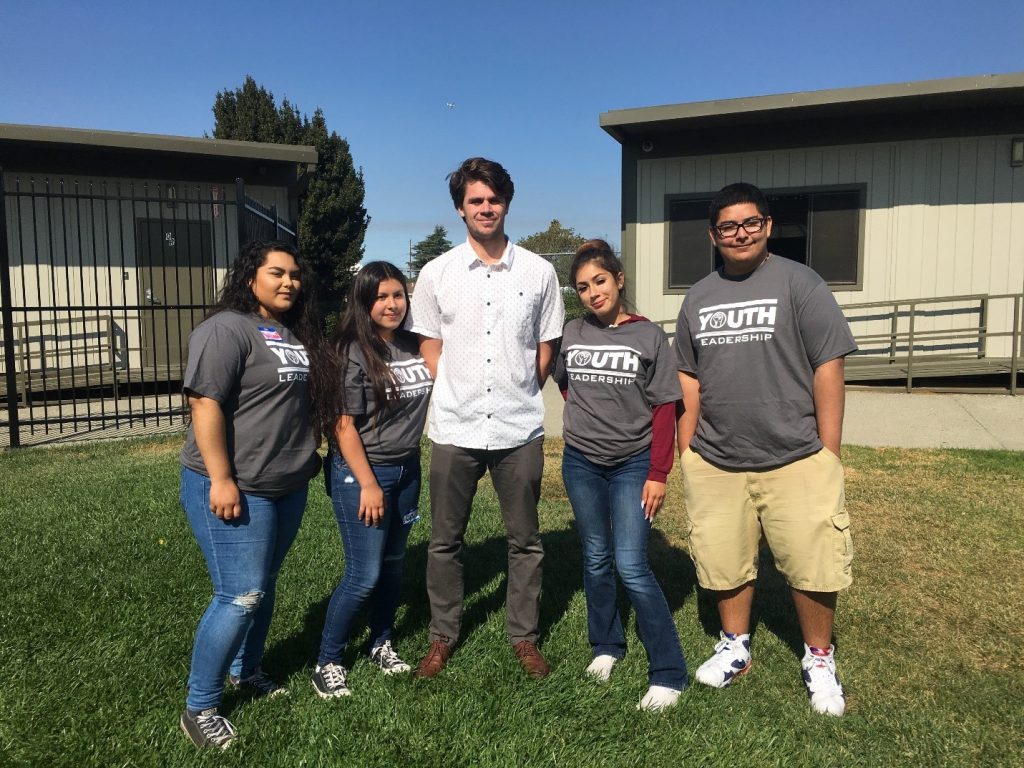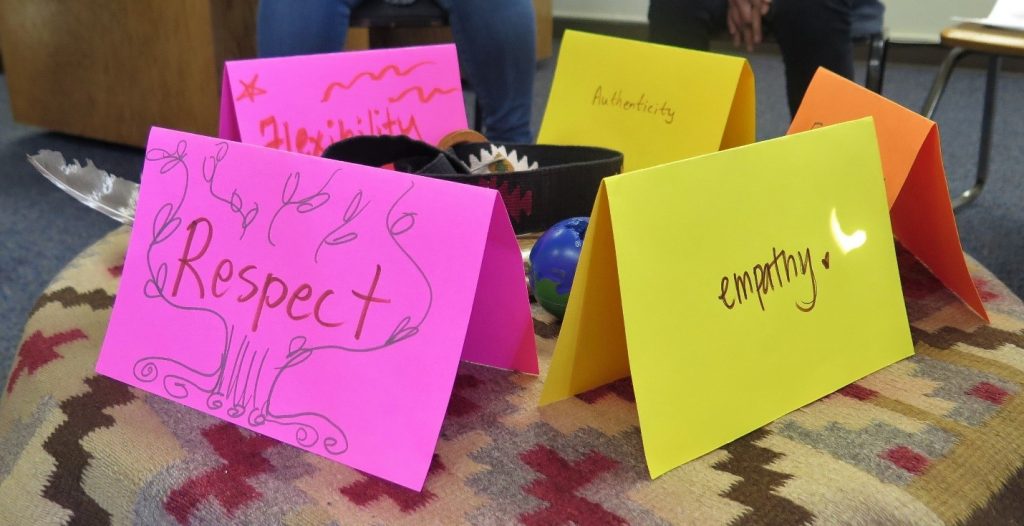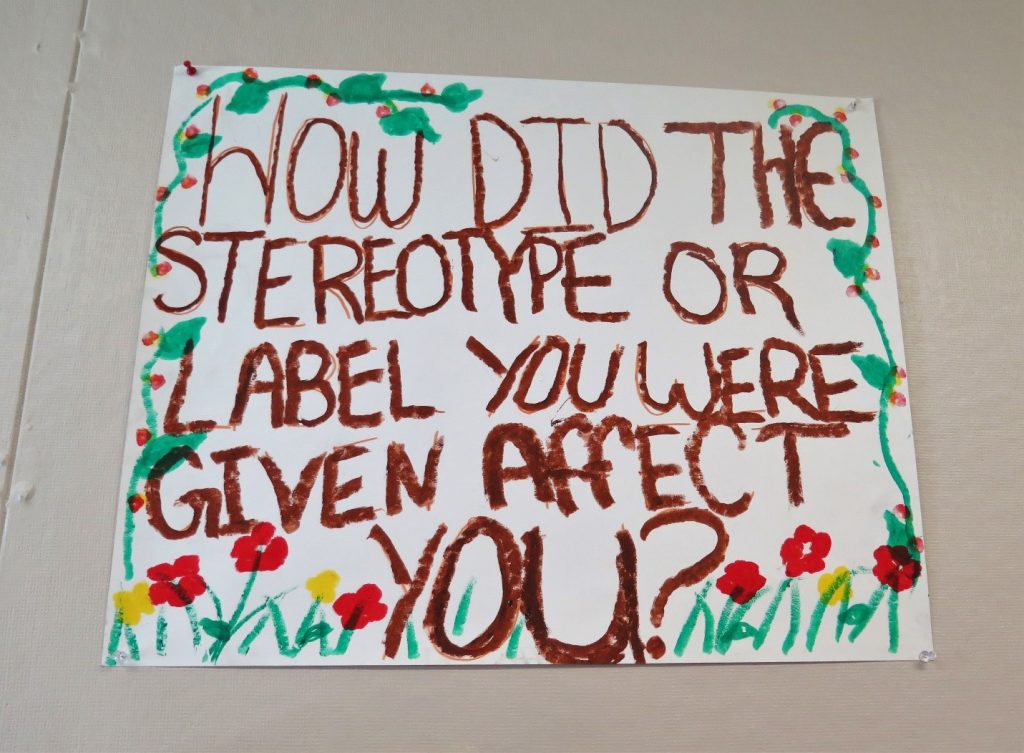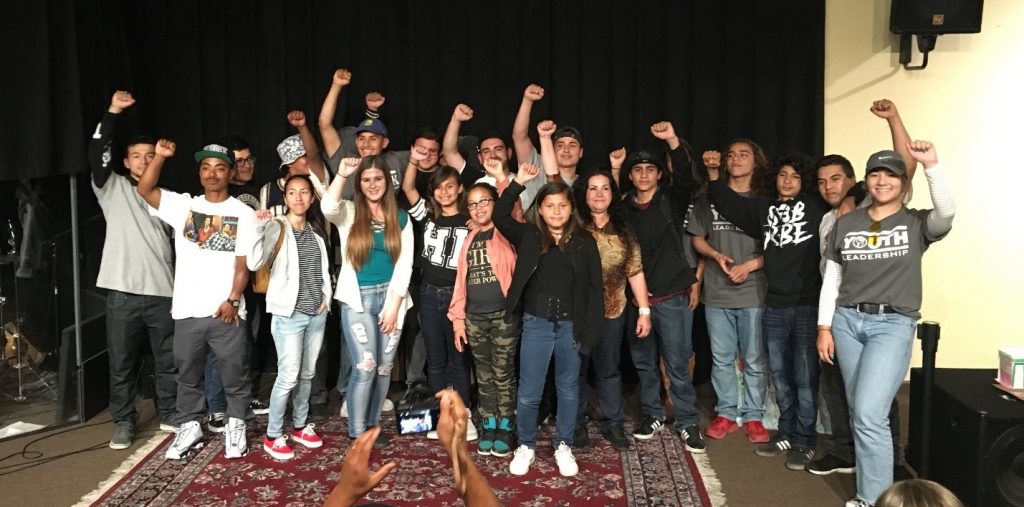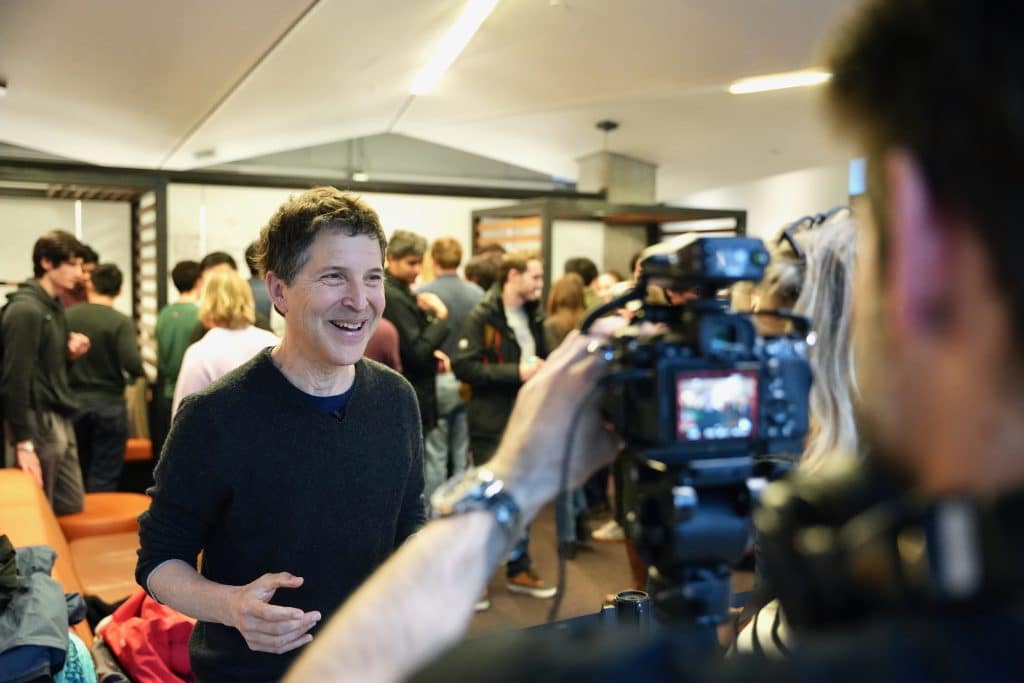Hollister Youth Alliance works alongside youth to build pathways of opportunity while advancing leadership for a more just and equitable community. Youth can participate in their after-school programs that offer safe spaces and connection to other youth, youth support services that provide healing through counseling, family support and guidance, and other resources.
Youth Alliance’s Restorative Justice Program
I joined Youth Alliance for an afternoon to experience their work, those who make the work possible and the Youth Alliance community.
Julius Mills-Denti, a Restorative Justice Specialist working with Youth Alliance, guides youth and program discussions at San Andreas Continuation High School in California’s San Benito County.
“People here cannot control themselves – so, there will be fights. But recently, since he’s been doing this [Restorative Justice], there hasn’t been any fights. It’s gotten… cool.”
Several high school students sat huddled together in a sharing circle. The legs of their chairs touched one another. Each student placed a small, personal token in the center of a circle atop a spare chair in a portable unit classroom in Hollister, California.
The tokens were not necessarily special—they were whatever happened to be in everyone’s pockets at that moment. As each person shared something personal about themselves, it became clear that these items symbolized a willingness to contribute to the practice of restorative justice.
Restorative justice is a healing process to restore or make things as right, as possible, while holding students accountable, building community and mutual understanding.
Another part of this work Youth Alliance led alongside the high school’s youth involved inviting community members to participate in restorative justice practices on site. Community members came to the school and participated in their own community circle with the youth. They were welcomed by posters and art created and hung by students around the room and campus – artwork focused on not labeling or stereotyping the students. Students said this is all too common at a non-traditional high school such as theirs. People have their biases, their opinions about them. This event sought to change that.
Community Context
The semi-rural community of Hollister is partially remote from systems of care, requiring Youth Alliance to be even more unique in their service offerings for youth and families. Parents often commute long distances to secure higher wages for their family, leaving youth alone for portions of the day. The hours of 3 p.m. to 6 p.m. are peak hours for juvenile misconduct and substance abuse, said Eduardo Navarro, a staff member at Youth Alliance. The Youth Alliance creates safe spaces for youth where they are encouraged and inspired to be creative, confident, to lead, and be involved with their local community.
Youth and Family Support Services
Back at Youth Alliances offices, Jeannette Neal, the organization’s Parent Education Coordinator, shared a story about a Latino kindergarten student who was being isolated in a room with no light and an old desk because teachers mistook his learning challenges—and need for special, individualized education—as class disruptions.
This scenario, I was told, is all too common.
Boys of color are three times as likely to be disciplined, referred to law enforcement, or arrested than their white counterparts, according to the U.S. Department of Education Office for Civil Rights’ School Climate and Safety Report.
This student was experiencing bias firsthand that feeds into the school to prison pipeline. By first grade, he had been suspended multiple times, a form of discipline that did not help him get the support and specialized learning to succeed. Youth Alliance supported this family and continues to work with education partners and communities to create restorative responses to youth.
Jeanette helped the student’s mother organize a parent group and an action plan: a series of steps for what to do when the student was reprimanded again. As a result of Hollister Youth Alliance’s involvement, the school was held accountable and the student received an Individualized Education Program to best support his learning needs.
Through Youth Alliance’s various programs, youth, families and community are provided with innovative and culturally-relevant services to lead in their communities and thrive.
Learn more about Youth Alliance here and follow them on Facebook and Twitter.
Editors’ Note
Infinite gratitude to Hollister Youth Alliance staff and youth.
Thank you to the David and Lucile Packard Foundation staff that contributed to this article: Jessica Mancini, Local Grantmaking Program Officer and Betsy Lopez-Wagner, Communications Officer.

